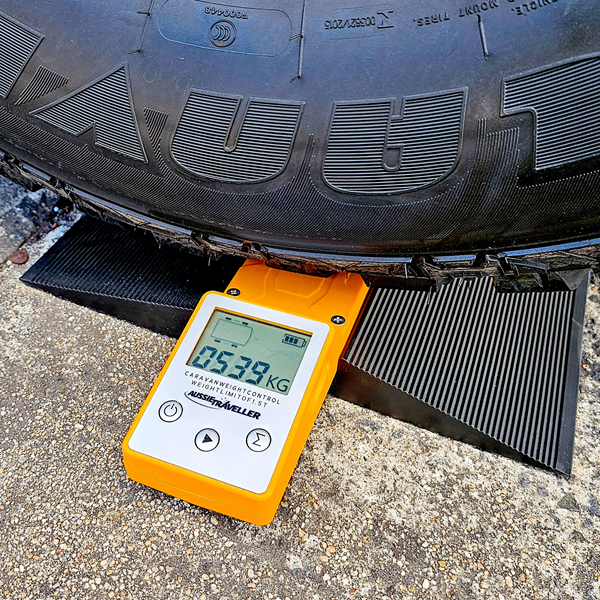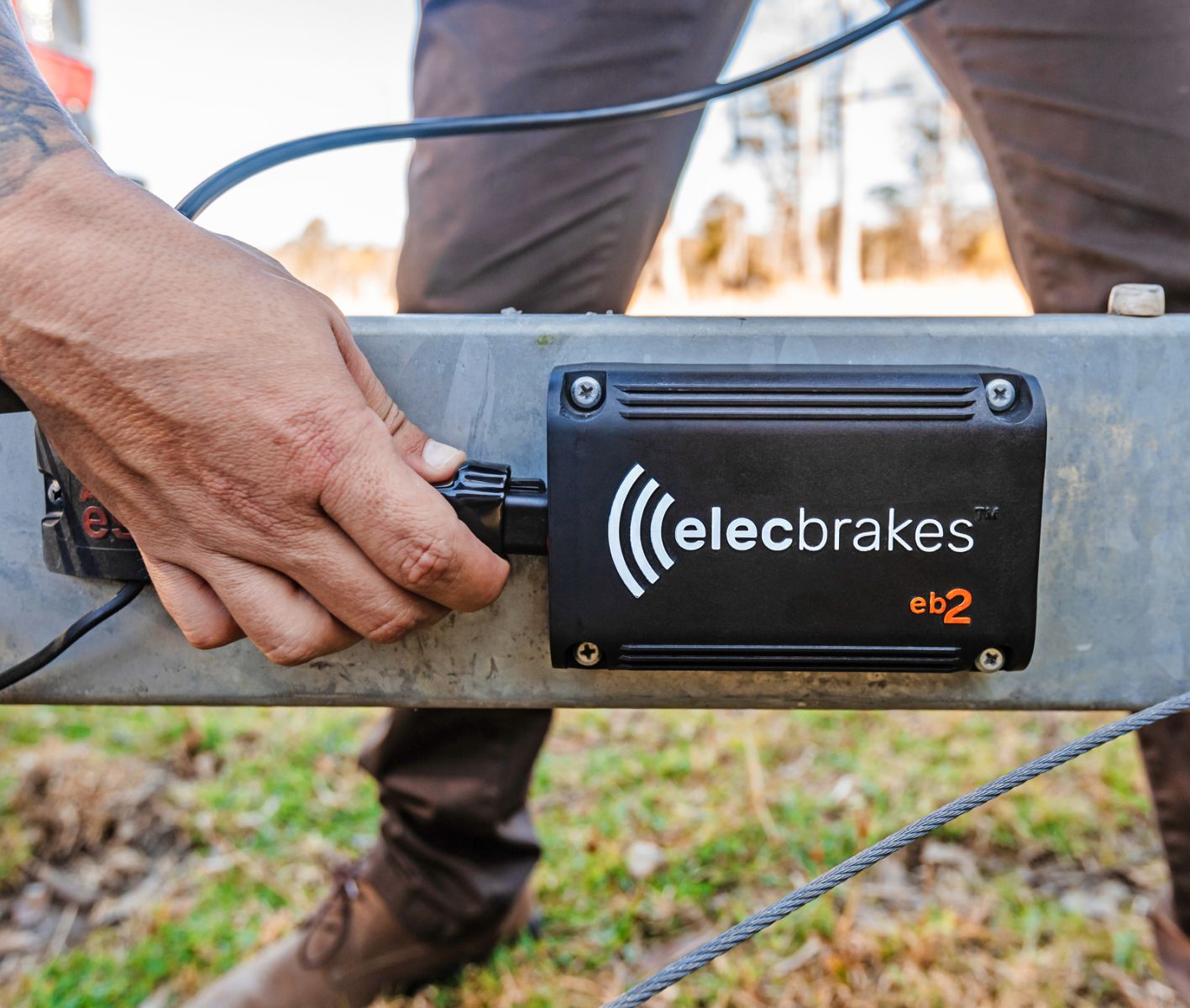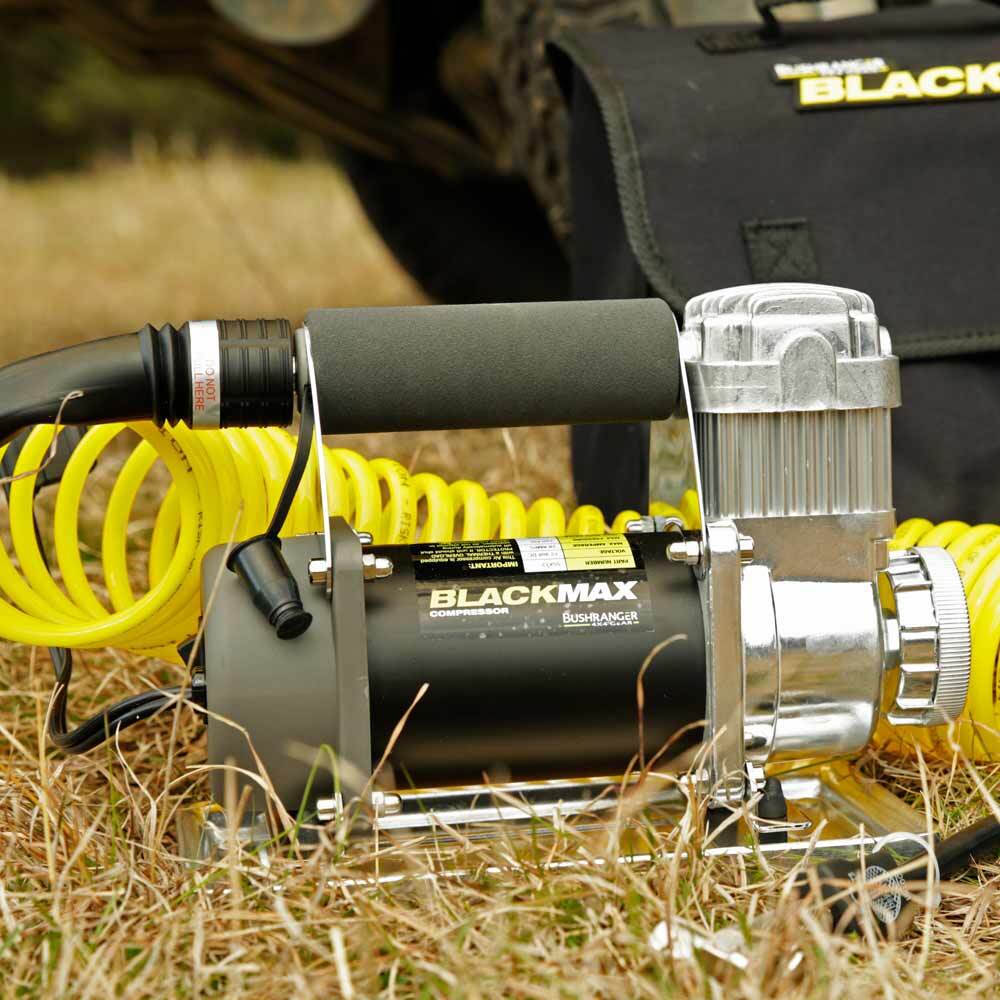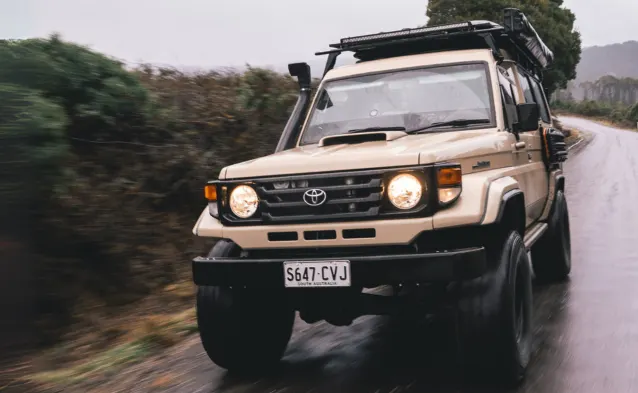Towing a caravan, can be a deal breaker when it comes to heading away with your loved ones. Towing incorrectly can cause increased fatigue, agitation, and most of all danger to the driver, passengers and everyone else on the road. When heading away on your next big adventure, it is important to make sure you (or your driver, if the passenger is reading this!) are equipped to tow safely. In this guide we will run through some quick tips to make sure your set up is tow ready.
Before You Hit the Road
1. Match Your Vehicle to Your Caravan and WEIGH!
This is perhaps the most crucial step. Your towing vehicle and tow bar need to be capable of safely handling the weight of your caravan. Check your vehicle's owner's manual for its maximum towing capacity and never exceed it. Also, consider the tow bar’s capacity if you have installed this after you purchased your tow vehicle. Checking your caravan's weight is imperative for ensuring you are legally under the weight limits. This can be done a number of … weighs (pun intended).
-
Using a local weigh bridge when you are packed and loaded is a great way to establish your weight, weighing hitched and unhitched.
-
A convenient method of weighing at home is by using a Digital Weight Scale, this allows you to weigh each tyre to give an indication of how your loads are distributed in your van.
-
A third step to measuring can be done by using a Tow Ball Weight Scale. Your tow ball weight should be 10% of your overall caravan's weight.
Understanding weight ensures you are within your tow vehicle's limits to tow, your caravan’s chassis capability and most of all, to keep you covered by your insurance. Many insurance companies can void your claim if you are towing beyond all the above mentioned capabilities. Not to mention the danger you are putting yourself and others in, on the road by towing overweight.
2. Weight Distribution is Key
Proper weight distribution within your caravan is vital for stability. Heavy items should be placed low down and as close to the axle as possible. Avoid loading too much weight at the front or back of the caravan, as this can lead to unstable towing, known as "snaking" or "fishtailing." Aim for a tow ball weight that is within your vehicle and tow bar's specified limits, typically around 7-10% of the caravan's ATM.
Not all tow vehicles and caravans will be a perfect match at the hitch point. Choosing the correct hitch or shank will adjust your tow ball height to suit your caravan’s setup.
To determine what size shank you require you will need to have your vehicle and trailer/caravan level and get your tape measure out to do the following:
-
Hitch Height: measure from the top inside of your vehicle's receiver (you will find this on your tow bar and is where the shank will connect) to the ground.
-
Coupler Height: measure from the base of your coupler (your ball mount on the caravan or trailer) to the ground.
Once you have these two measurements you will subtract your hitch height from your coupler height giving you your drop. If your trailer sits higher than your tow vehicle you will need to subtract your coupler height from your hitch height . This will give you your rise.
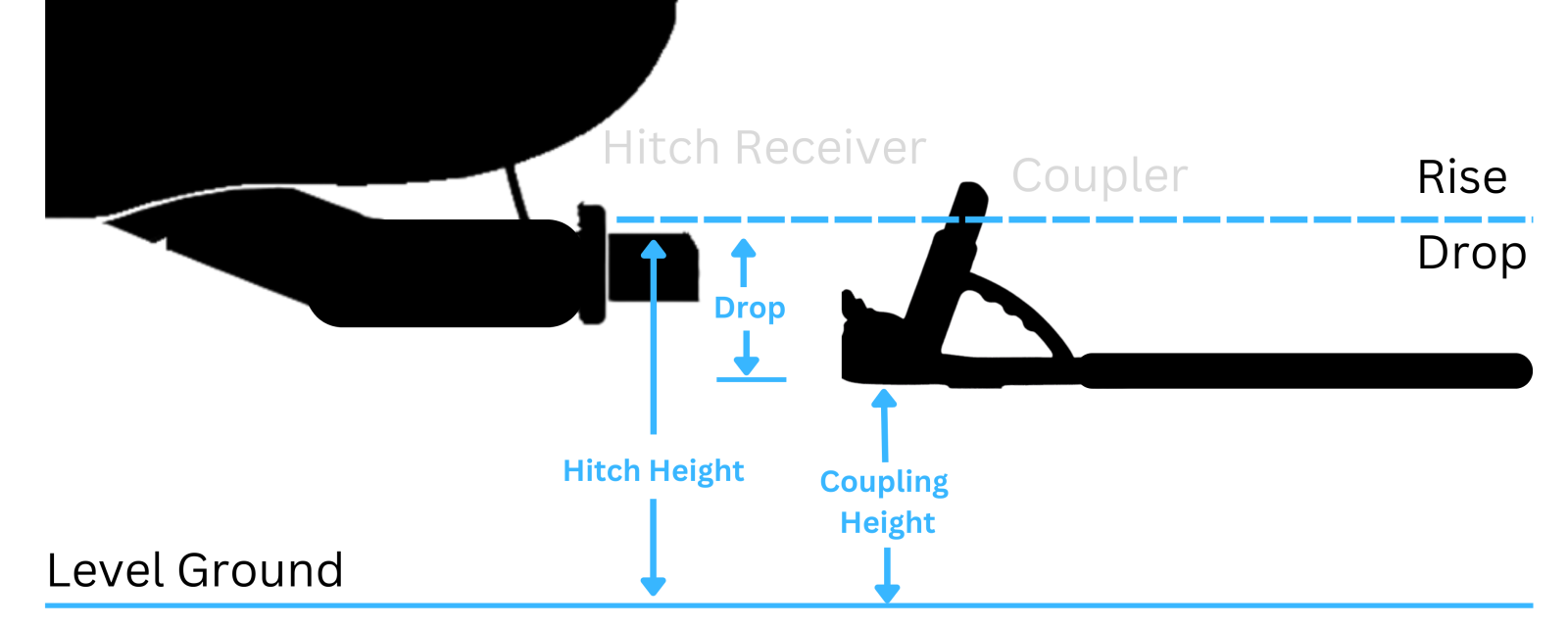
-
When the tow vehicle is higher than the trailer - Hitch Height 14" (355 mm) - Coupler Height 10" (254 mm) = 4" (101 mm) Drop
-
When the trailer is higher than the tow vehicle - Coupler Height 16" (406 mm) - Hitch Height 13" (330 mm) = 3" (76 mm) Rise
Centurion and Black Jack Brutus offer hitches to help get your rig level and also look sleek and tough in one hit. There's a range of options to explore for every setup.
Using correct weight distribution hitches is key to towing more comfortable and safe. If you hitch up and the front of your car is staring at the sky, you are going to need a weight distribution hitch. This will allow you to distribute your overall weight and make you 110% safer on the road. Choosing your weight distribution hitch is easy, know your weight of your van loaded and choose the one to suit. Most common weights are 2500kg and 3500kg, so you can find something to suit your caravan's needs.
3. Brake Controllers and Sway Control
Whilst some tow vehicles come fitted with brake controllers and caravans with sway control, you might come across ones that aren’t fitted, or are old and not functioning. Choosing the correct products for your rig is important for safety, most importantly, it must comply with the law. Any trailer with a GTM over 750kg must have an efficient braking system. If your trailer is between 751 and 2000kg brakes must be fitted to at least one axle. If your van or trailer is over 2000kg brakes are required on all wheels. This can be achieved by using electric, hydraulic or mechanical override brakes.
A brake controller is used with electric brakes and is an effective way to control the braking of your van from inside the tow vehicle. They can be proportional like the Elecbrakes2 where it senses the vehicle's deceleration and applies the corresponding braking force. This is also a wireless brake controller and great if your caravan gets shared around the family or used with multiple tow vehicles with a plug and play set for versatility. Elebrakes now also offer added sway control without any extra installations. More safety in one product! Then there are timed controllers such as the Hayman Reese Compact which uses a pre-set amount of braking force on a timer after the brake pedal is pushed. These controllers can make the braking feel jerky, compared to a proportional brake controller.
Whilst a weight distribution system will offer some sway control, friction or electric sway controls add another layer. Friction sway control creates friction at the hitch ball, dampening side to side movement such as the Curt Sway Control Kit. These are cheaper and easier to install. However they can reduce turning radius and may need to be disengaged to park, etc. Electronic sway control such as the Lippert LCI Sway Command 1.5 has sensors that detect lateral movement and apply the caravans braking to counteract the sway. These do require caravan wiring, and need to be compatible with your brake system.
4. Check Tyres (Vehicle and Caravan)
Before every trip, inspect the tyres on both your towing vehicle and your caravan. Ensure they are inflated to the correct pressure as specified by the manufacturer. Incorrect tyre pressure can affect handling, fuel economy, and can even lead to blowouts. Also, check for any signs of wear, cracks, or damage. Don't forget your spare tyres! CAOS 100 psi Tyre Pressure Gauge offers an easy way to check before taking off. Level up and invest in a portable compressor such as the Bushranger 12V Black Max Air Compressor. This allows you to keep your tyres pumped wherever you are.
5. Unhitching and Repairs On The Road
Using jockey wheels to unhitch and hitch your van can certainly get the job done, however to lift your hitching game check out the Black Jack range of electric trailer jacks. With the push of the button, you can lift or drop your caravan easily onto your tow ball - saving both your shoulder and your relationship!
Whilst on the topic of jacks, it’s important to have a reliable jack when towing on the road for unpredictable repairs. The Purpleline Kojack High Lift 4 Ton Jack Lift to 750mm is the perfect companion for your 4WD and your van. An easy to use hydraulic jack will make changing tyres on the road less of a hassle.
Let's Hit The Road
Now you are all geared up, it’s time to follow the setp's below when you are on the road.
1. Drive Smoothly and Anticipate
When towing, sudden movements are your enemy. Accelerate gently, brake smoothly, and take corners wide. Look further ahead than usual to anticipate traffic and road conditions, giving yourself more time to react. If your caravan starts to snake or sway, resist the urge to overcorrect. Gently ease off the accelerator, avoid braking sharply, and maintain a firm grip on the steering wheel. If this keeps occurring there is an issue with your weight distribution or your sway control might not be operating and it’s time to get it checked.
2. Increase Your Stopping Distance
Your combined vehicle and caravan will take significantly longer to stop. Maintain a much greater following distance than you normally would; at least double your usual gap.
3. Be Mindful of Speed Limits
While there might be higher speed limits for cars, caravans often have lower specific towing speed limits. Adhere to these, and remember that it's often safer to travel at a slightly lower speed than the maximum, especially in windy conditions or on challenging roads.
4. Check Your Mirrors Frequently
You'll need extended towing mirrors to see clearly down the sides of your caravan. Use them constantly to monitor traffic, check your caravan's position, and be aware of your surroundings.
5. Take Regular Breaks
Towing can be more demanding and tiring than regular driving. Plan for frequent breaks to rest, stretch, and check your caravan and hitch for any issues.
Check out this video on How To Tow Your Caravan Safley. We wish you happy and safe towing!
Explore our full range of towing gear here and feel free to give our team a call on 1300 400 122 for any assistance!
DISCLAIMER* Please note, this advice is general in nature and we strongly recommend consulting the product manual and where relevant, a professional installer.
